A Riga City Tour: 10+ things to see in Riga
This could have been a review of a tour that doesn’t actually exist.
What I mean is that the Riga city tour I took was sponsored by #LiveRiga, a campaign of the Riga Tourism Development Bureau, but it is not run on a scheduled basis. Rather, our guide, Juris Berze, is a freelance tour guide, hired in to do this tour.
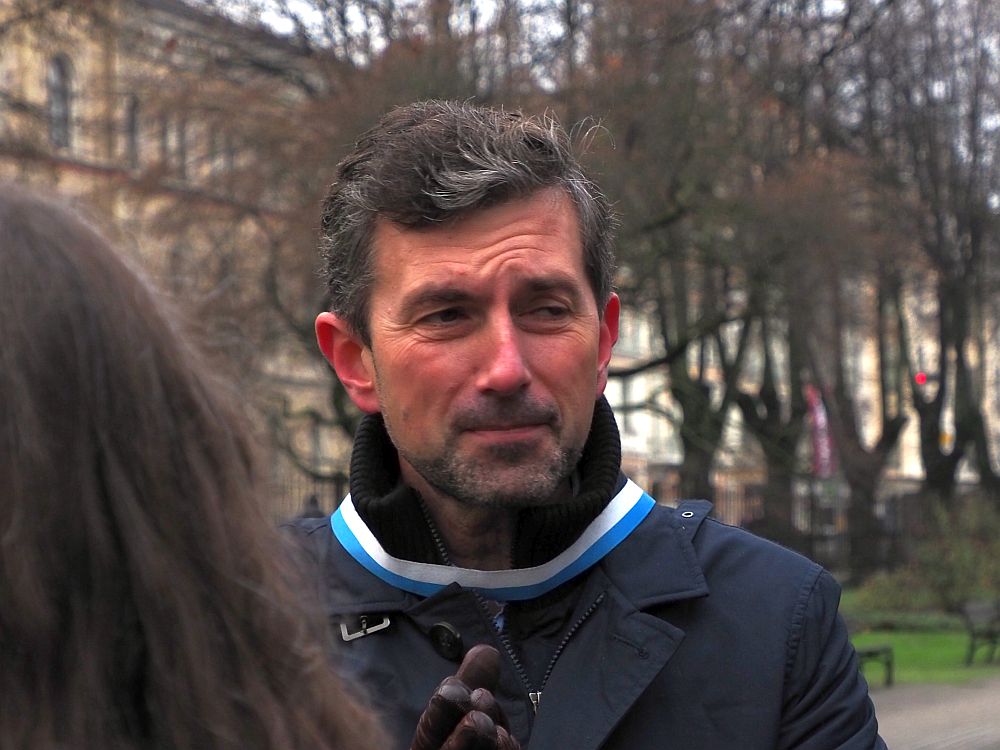
So instead of writing a review, I’ll just say that Juris is an excellent tour guide, and move right on to telling you about the city and about more than 10 things to see in Riga.
Disclosure: Some of the links in this article are affiliate links, which means if you click on one and make a purchase, I’ll receive a small commission. This will not affect your price.
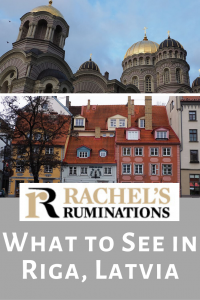
Note: I have pinned all of the places mentioned in this article onto the map below so you can plan your own walking tour of Riga. If you’d rather not do that, you can book a variety of tours on GetYourGuide.
Riga’s history
Riga is the capital of Latvia, the middle of the three Baltic states. What it is most known for these days is its art nouveau architecture, but there’s a lot more to its history.
While people had already lived in the area for centuries, the city was founded in the 13th century and soon became a Hanseatic League city under the control of Germans. This was due to its location at the mouth of a river right on the Baltic coast, making it a good location for trade.
Read more about Hanseatic cities in these articles:
Riga (and the whole country of Latvia) has a history of being passed from pillar to post. Riga became part of Poland and Lithuania in the 16th century, Sweden in the 17th century, and the Russian Empire starting in 1710. While Germany claimed Latvia from Russia after the Russian Revolution in 1917, Germany’s defeat in World War I left Latvia independent for the first time ever in 1918. Then the Latvian War of Independence in 1918-1920 prevented the Bolsheviks from immediately reclaiming Latvia.
This didn’t last long: the Soviet Union took over the Baltic states in 1940, followed by the German takeover in 1941. The Soviet army took over again in 1944, ushering in almost 50 years of oppression under Soviet rule, only ending with the collapse of the Soviet Union. Latvian has been a proudly independent country since 1990.
Our Riga city tour
Here are the main stops on our tour, more or less in the order we saw them.
1. Russian Orthodox Church
We started at the Nativity of Christ Church, a Russian Orthodox church surrounded by a park and topped with gold domes. Dating to the 18th century, when the Russian tsars ruled Latvia, it parallels much of Latvia’s recent history: changing hands several times.
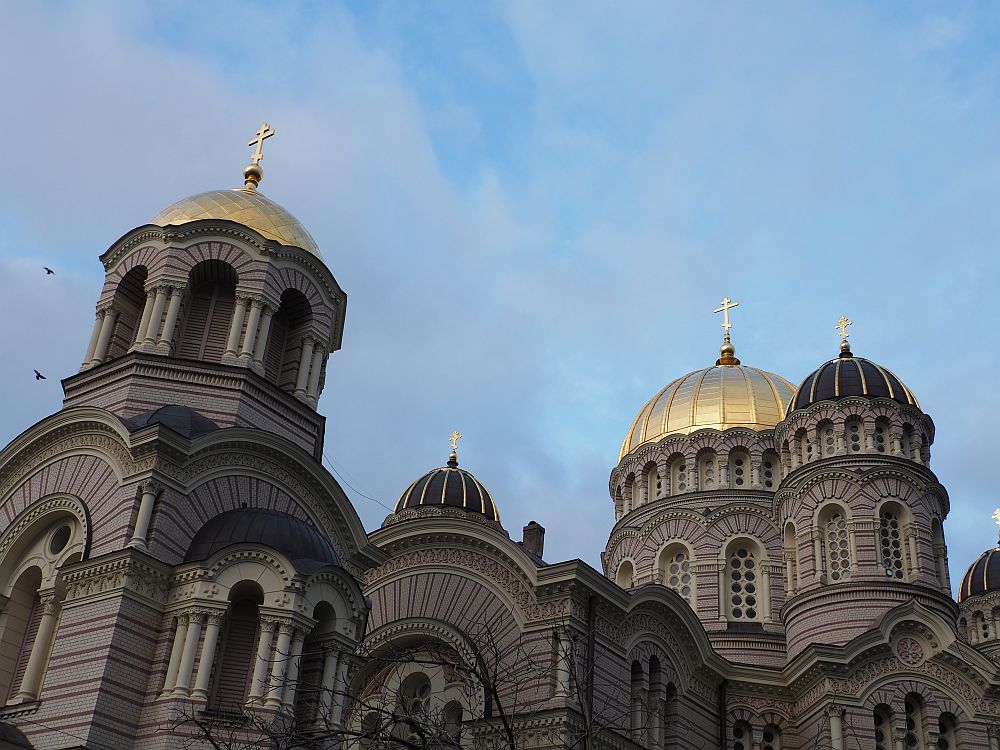
After the Germans took Latvia in the First World War, it became a Lutheran Church. It switched back to Russian Orthodox again during Latvia’s independence period between the wars. Under the Soviets, it was converted to a planetarium. Since the country’s independence in 1990, it has returned to Russian Orthodox and had a thorough renovation.
If it’s open, you can go inside, but women have to put a shawl or similar on their heads to show respect.
Nativity of Christ Church: Brīvības bulvāris 23
2. Sakta flower market
We stopped for some pictures of the 24-hour flower market. As Juris explained it, you never know when you’re going to need some flowers.
Sakta flower market: Tērbatas iela 2
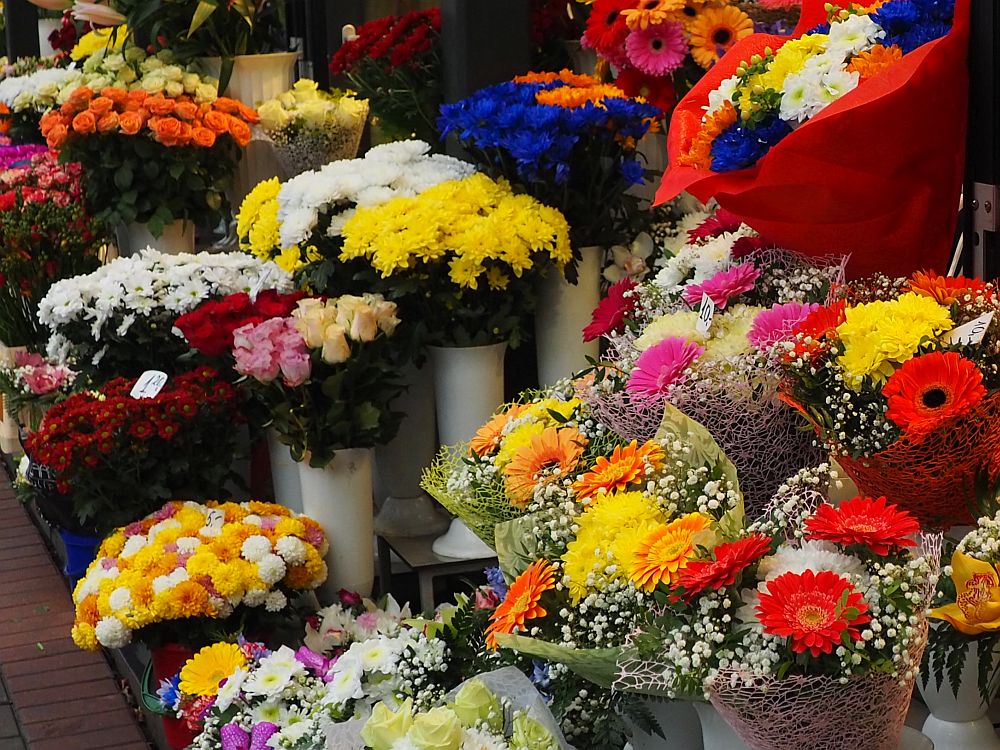
3. The Freedom Monument
This tall monument stands on a plaza on Freedom Boulevard, which, by the way, used to be called Adolf Hitler Boulevard and then Lenin Boulevard, according to Juris.
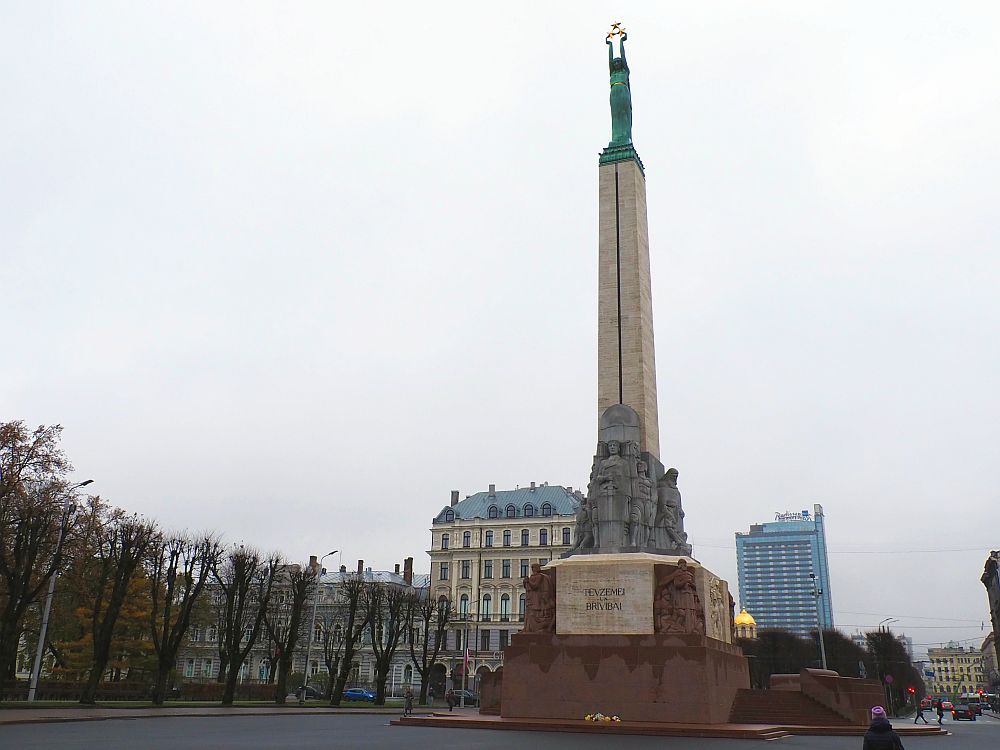
I’m not usually particularly interested in monuments, but this one struck me as particularly pretty: a certain art deco style, with a socialist realism flair. According to Wikipedia, it was built in the early 1920s as a memorial to those who died in the Latvian War of Independence and in the brief revolution of 1905. The figures at the base are in 13 groups and represent a range of Latvian historical and folk figures.
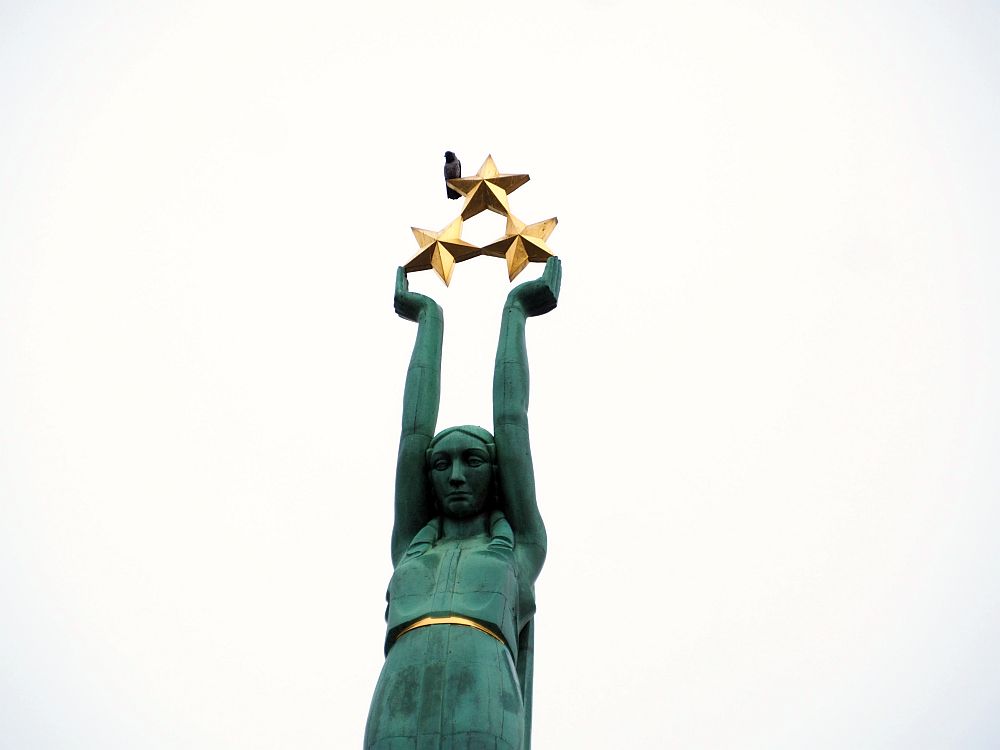
Juris told us about its history since it was built. The Soviets threatened to tear it down, but apparently realized how angry it would make the nation. Instead, they tried to rebrand it to celebrate Latvia as a Soviet Republic. While the intention was for the figure at the top to represent liberty, holding up the three stars of the three districts of Latvia, the Soviets tried to sell it as Mother Russia holding up the three Baltic states. In Latvia’s move toward independence, the monument became, quite literally, a rallying point for protests.
The Freedom Monument: Brīvības bulvāris inside the park near the canal.
4. Medieval city core
The entire center of Riga is a UNESCO World Heritage site: the small medieval core nearest the river and, outside of that, a half-ring of early 20th-century Art Nouveau architecture.
We first viewed some of the medieval-period buildings, and I found a row of colorful buildings on Livu Square particularly charming.
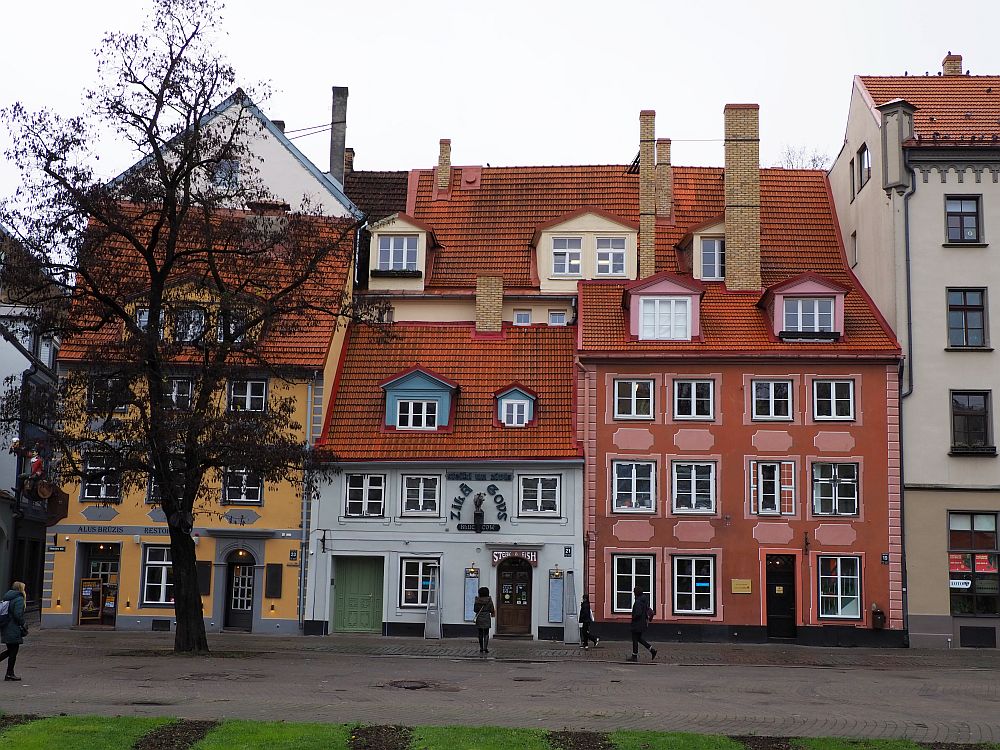
We passed through Dome Square, with the very pretty Lutheran Riga Cathedral.
Riga Cathedral: Herdera laukums 6
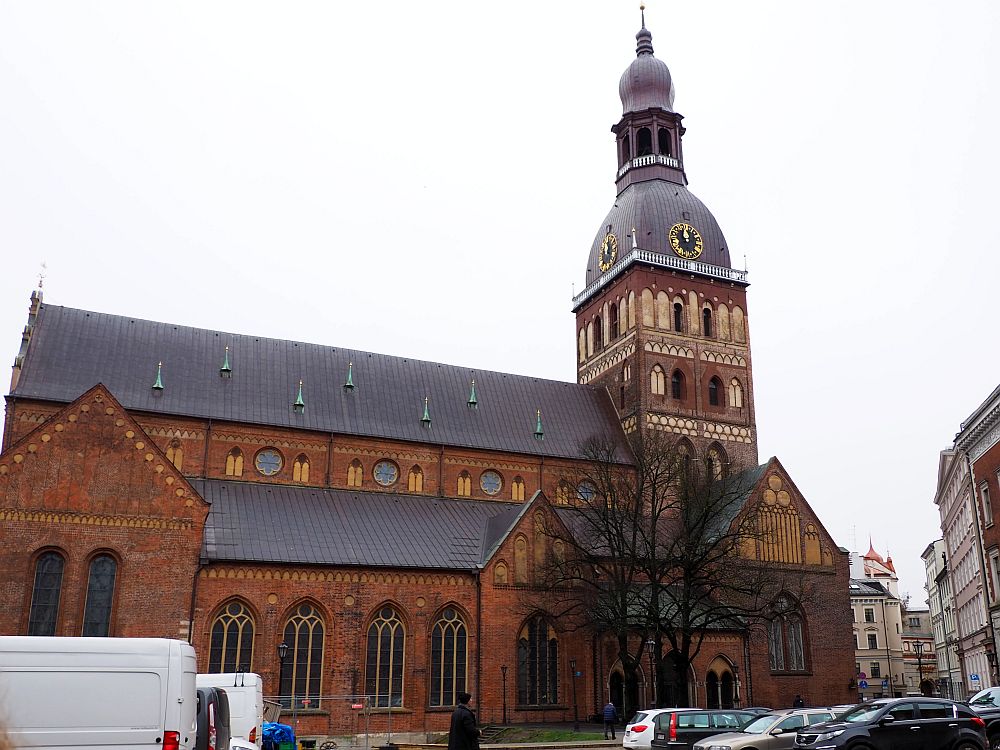
A South Korean crew was busy filming a scene, so as Juris spoke, we had to move out of the way for a horse galloping by, dragging a hay-filled cart driven by a very serious-looking Korean man. It was a bit surreal.
The three buildings referred to as the “the three brothers” are the oldest housing still standing in the city. We stopped and listened to a street musician playing “Singing in the Rain” on a French horn in front of them. Also a surreal moment.
The Three Brothers: Mazā Pils iela 17
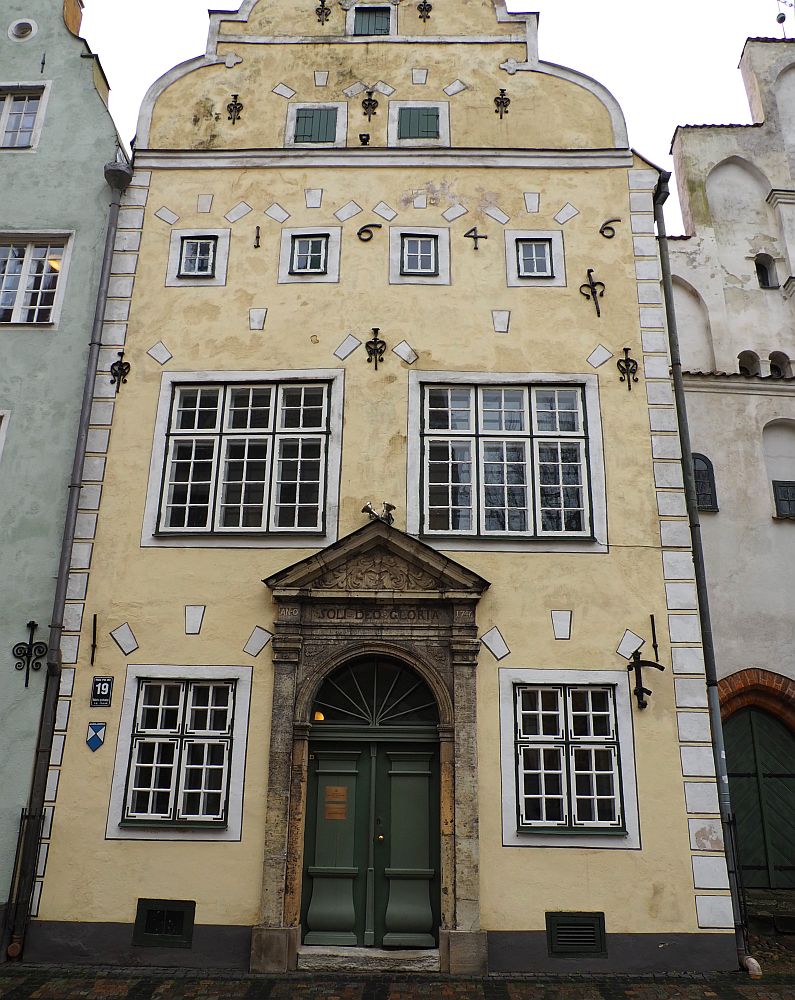
5. Art Nouveau
Riga is must famous for its spectacular collection of art nouveau buildings in the ring just outside the medieval core. There are a few hundred of these buildings: mostly apartments. I’m listing this a bit out of order because we passed them at several points of the tour.
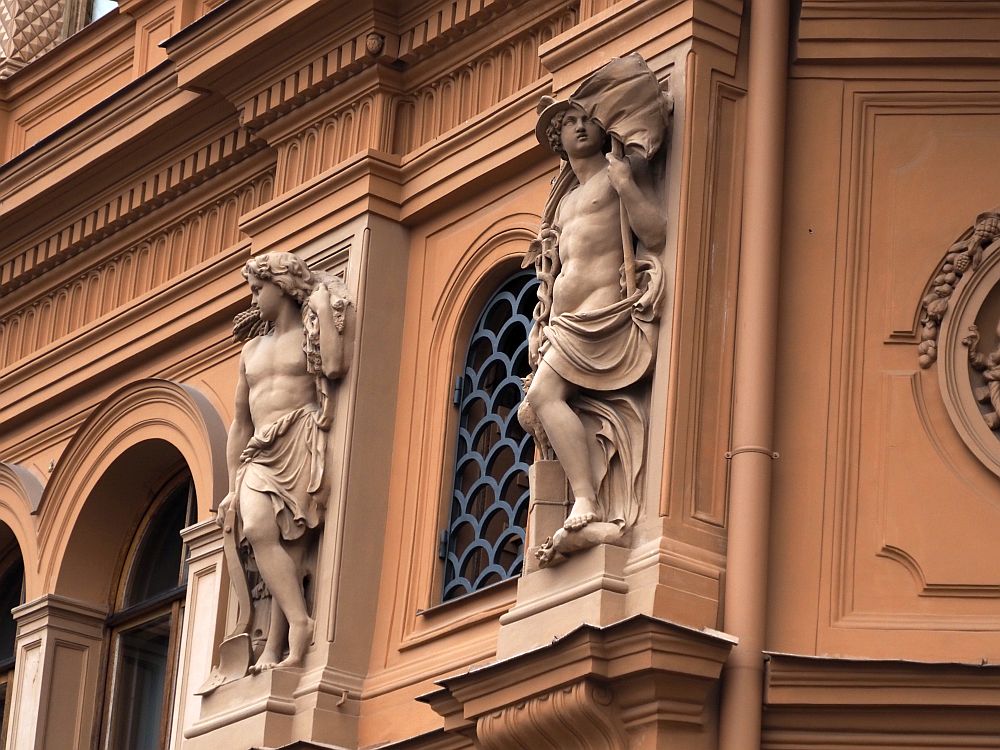
The beauty is in the details: look up above the front entryway, around the windows, and up at the roof line. The decorative elements are often geometrically simple, but sometimes positively fantastical.
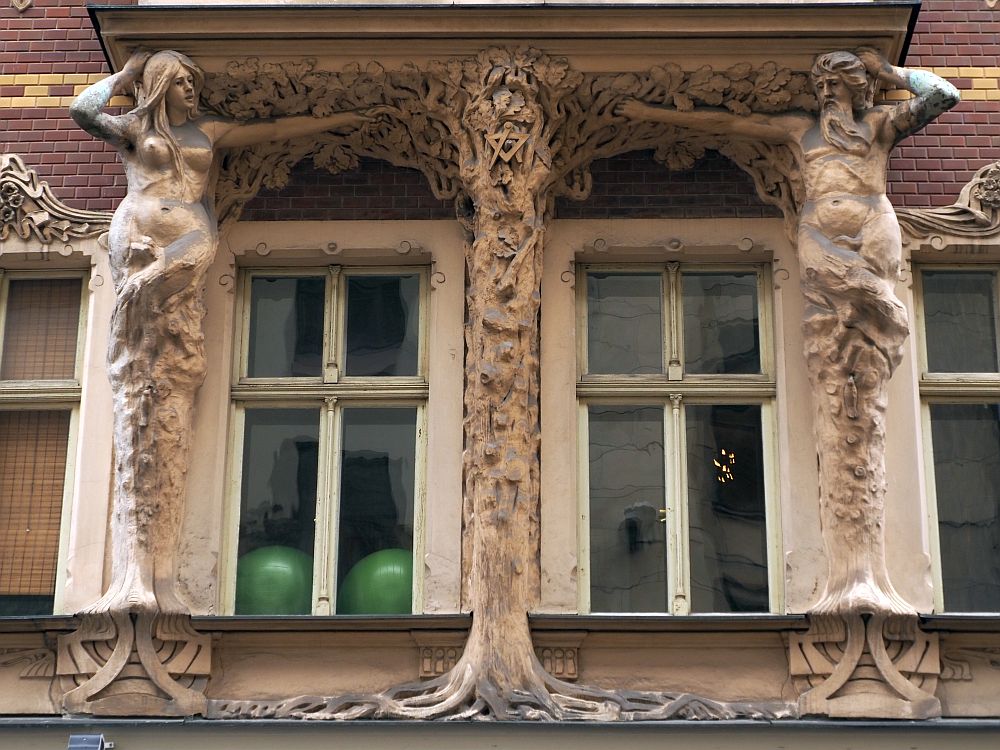
6. House of the Blackheads
The city’s unmarried merchants originally built this over-the-top confection in the 14th century. Since they weren’t married, they weren’t allowed to join a guild, so they started their own. The detailed ornamentation was mostly added in the 17th century.
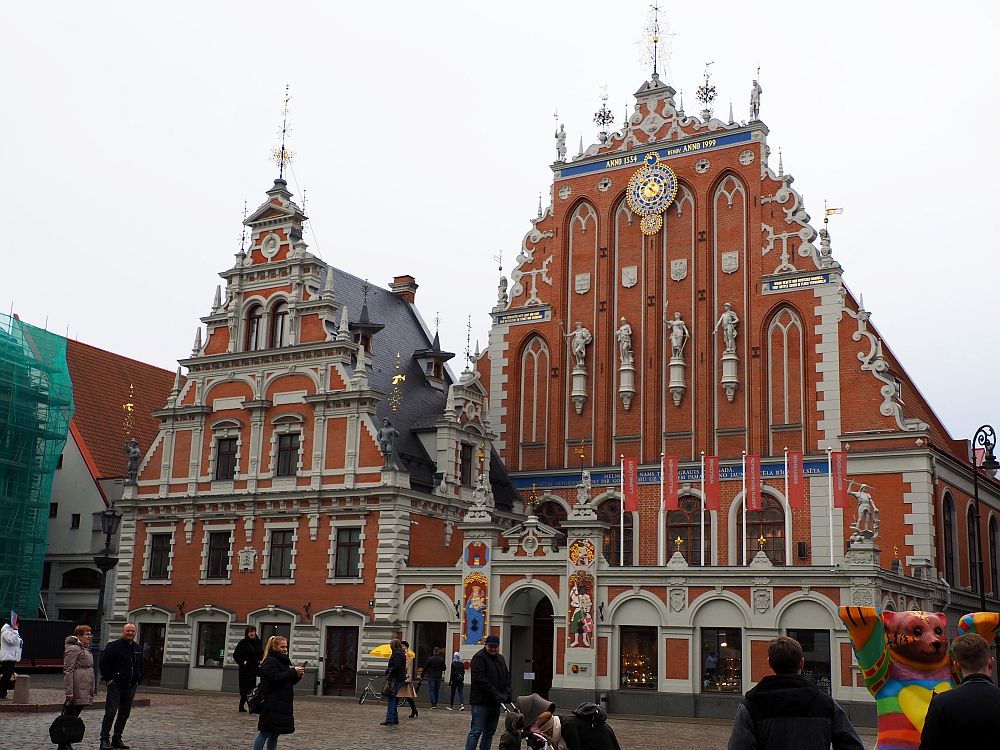
However – and I was disappointed to hear this – none of what we can see today is original. The building was bombed to rubble by the Germans in the Second World War and the Soviets bulldozed what was left in 1948. The current building is a reconstruction from the 1990s.
You’ll notice on the entrance that one of the painted figures is a black man who, Joris told us, is St. Maurice, who came from Egypt. He was the patron saint of the organization, hence the name “blackheads.”
The House of the Blackheads: Rātslaukums 7. Open daily 10:00-18:00. Admission €6 ($7).
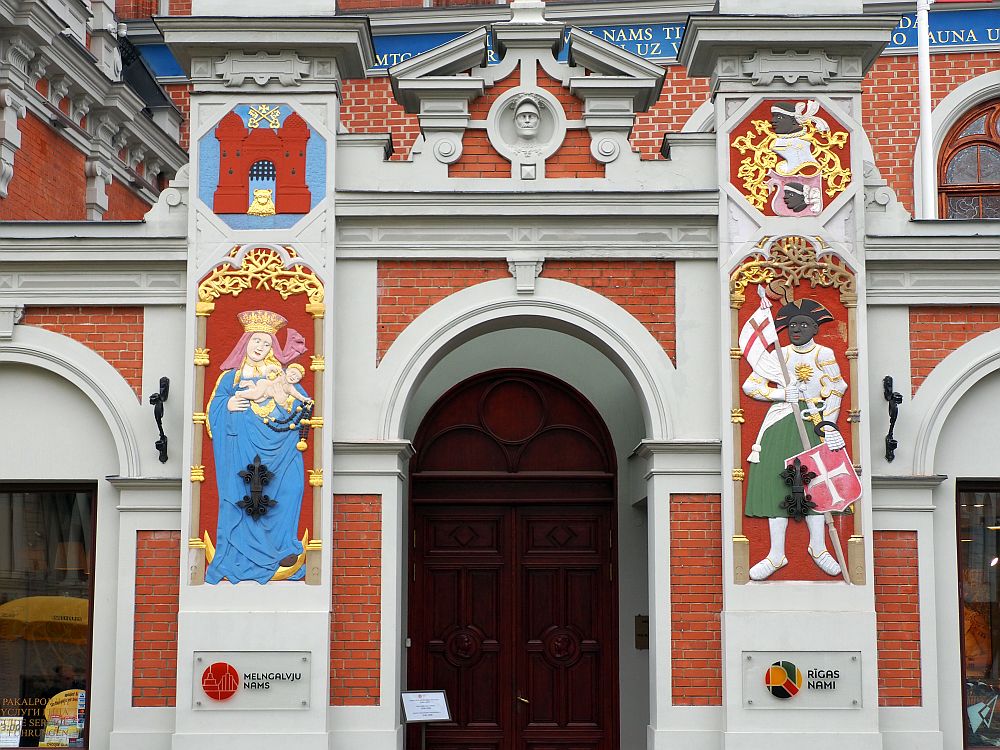
7. Riga Central Market
Our stop at Riga Central Market was an education in itself. The market is enormous: according to Wikipedia, it covers 72,300 square meters. The most striking thing about it, though, is the buildings that shelter the market. These huge half-cylinders used to be German hangars for zeppelins back in World War I. Or, to be precise, they were the top sections of even bigger hangars: removed and repurposed to house the market.
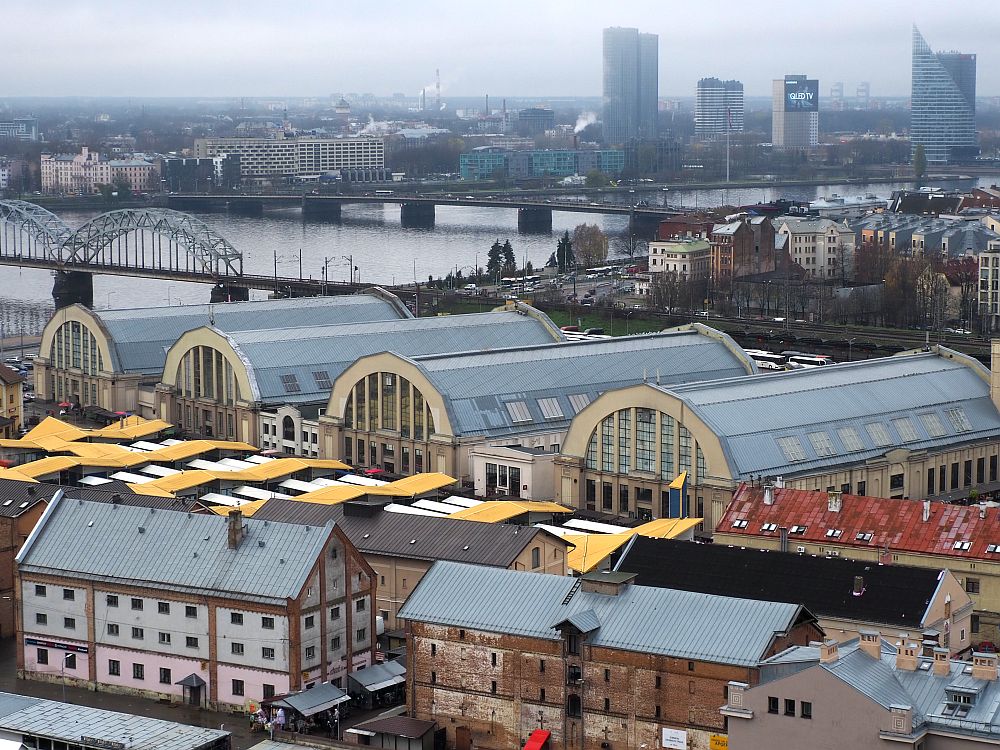
The market extends across five of the ex-hangars and into outdoor spaces around them. Each one focuses on different categories of food: one for vegetables, one for meat, one for fish, one for pickles and other processed food, and so on. Half of one hangar has become a food hall, so shoppers can buy food to eat on the spot.
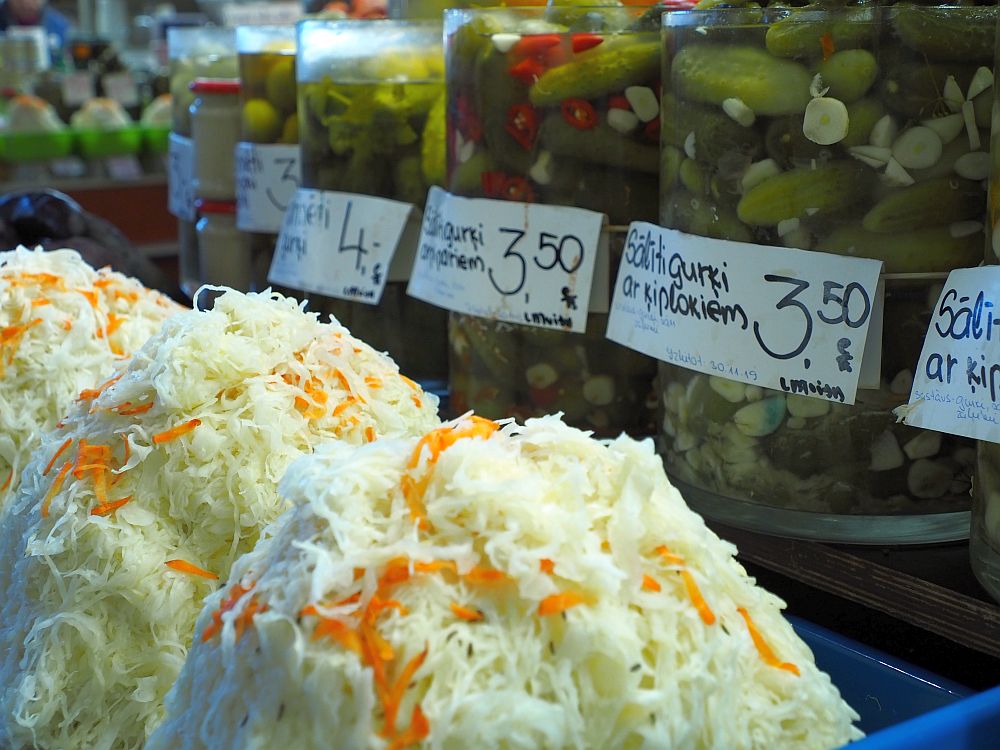
I visited the Riga Central Market again on a Foodie tour of Riga, which you can read about here.
Riga Central Market: Pragas str. 1. Open May-September 9:00-19:00, October-April 10:00-18:00.
8. The Academy of Science building
The original plan was for us to go up to the observation tower of St. Peter’s Church. Dating mostly to the 15th and 17th century, the church was largely destroyed in World War II and rebuilt in the next few decades. Like Riga Cathedral, it is a Lutheran church.
St. Peter’s Church: September-April open Tuesday-Saturday 10:00-18:00 and Sunday 12:00-18:00; May-August open Tuesday-Saturday 10:00-19:00 and Sunday 12:00-19:00. Closed Monday. Admission €9.
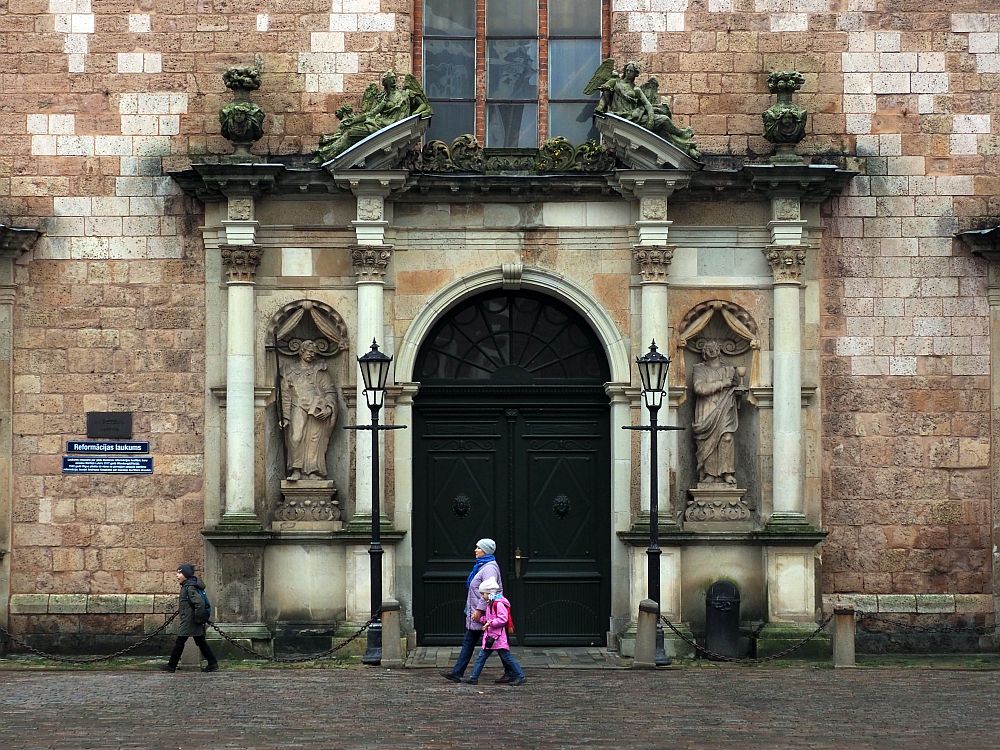
Because St. Peter’s was closed for some reason, we instead rode up to the roof of the Latvian Academy of Sciences building, a great example of Stalinist architecture, to see the view over the city. Apparently this building, finished in 1961, was one of a series of similar designs across the different Soviet Republics. It was Riga’s first skyscraper, clearly meant to aggrandize the Soviet Union.
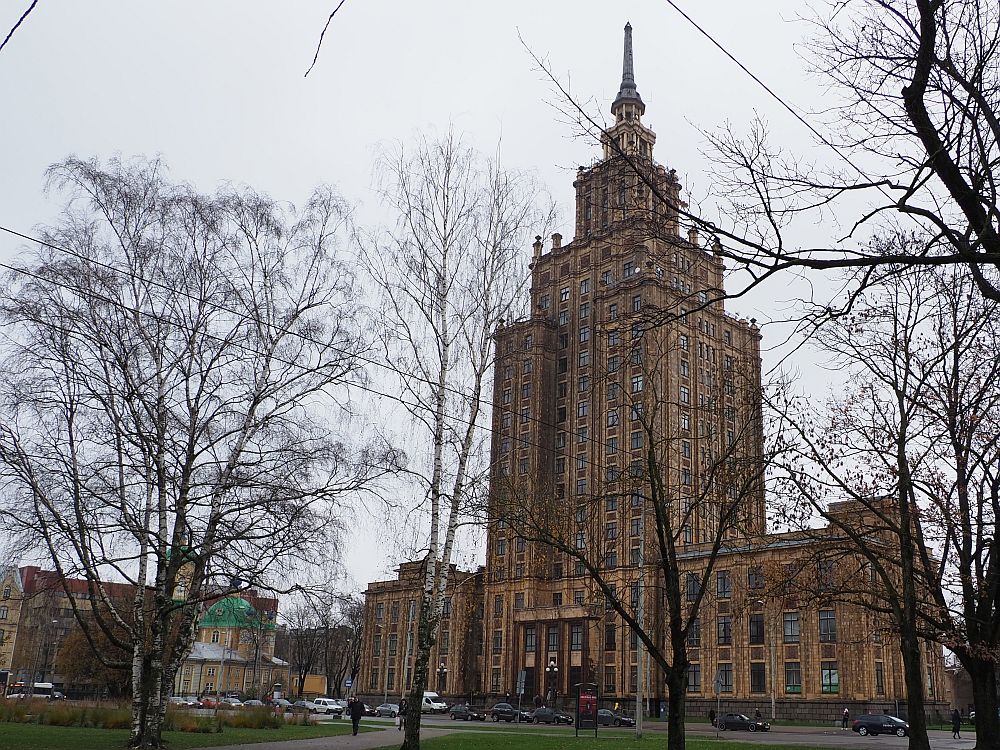
At the top, on the 17th floor, despite the overcast weather, we could see over the whole of the center of the city and the river. The wide outdoor viewing platform circles the whole building, allowing visitors to see in all directions. Small signs explain the more important structures that are visible. I took the photo above of the Riga Central Market from there.
Academy of Sciences panorama deck: Akadēmijas laukums 1. Open daily April-November 10:00-22:00. Admission: €6 ($7).
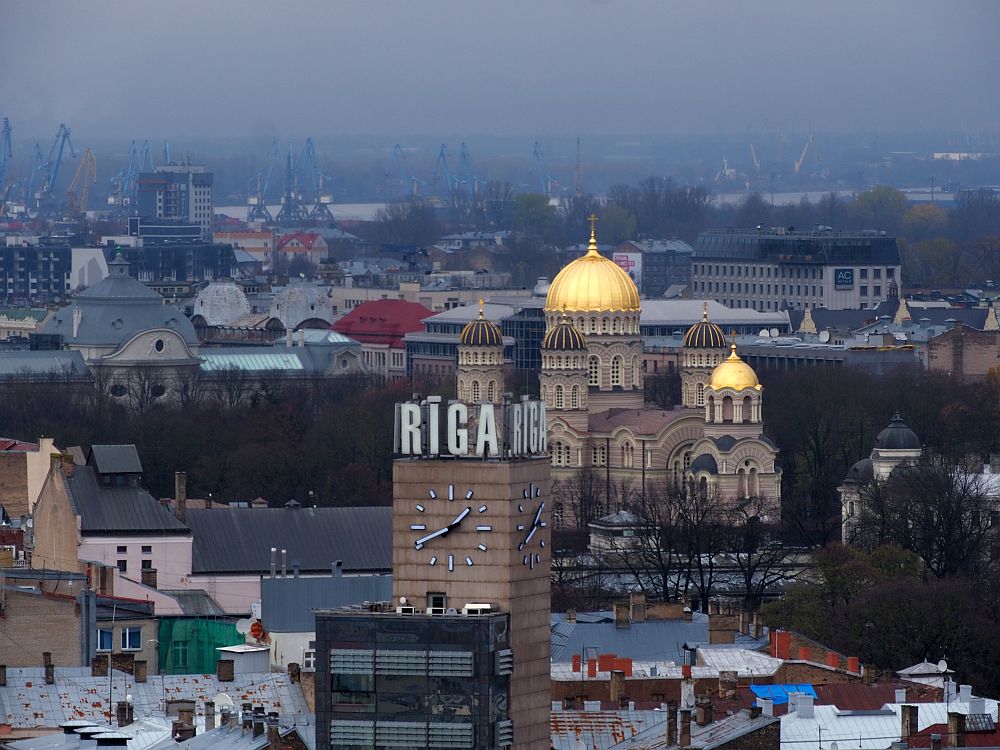
Other things to see in Riga
While I didn’t see these two sights on the Riga city tour, I did see them during my stay and I think they are worth a mention.
9. The Ghetto Museum
The Ghetto Museum marks the imprisonment and eventual deportation of the Jews from Riga and the deaths of 70,000 Latvian Jews. It’s not the most dynamic of museums, but then the topic shouldn’t be entertaining.
The first thing you see as you enter the courtyard that houses the museum is a wooden boxcar on a length of track. It’s the kind that the Germans used to move Jews from other nearby countries into the Riga ghetto and eventually to the concentration camps.
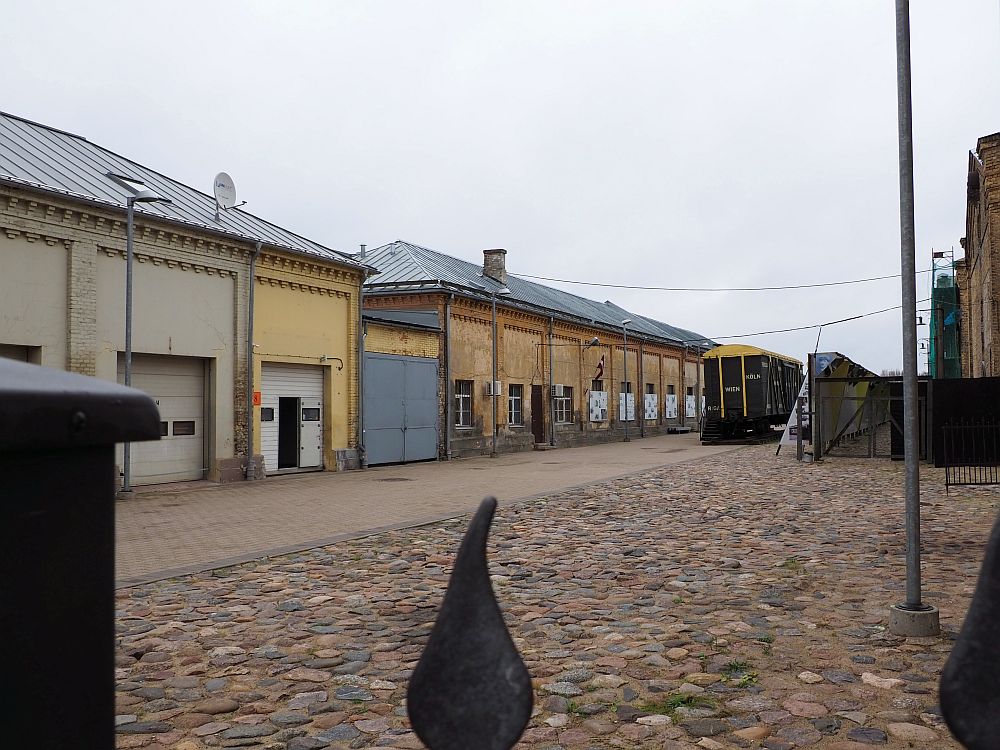
Inside, two sides of the boxcar have been covered with mirrors and set up to look like a birch forest. I presume this is meant to suggest the site of the Rumbula massacre of 1941, when 25,000 Latvian and German Jews were transported by train from Riga to Rumbula and executed.
Or perhaps it refers to the Bikernieki forest, where almost 50,000 were executed: Jews from all over Europe and from Kaiserwald concentration camp, as well as Soviet prisoners of war and others who opposed the Germans.
Many of the displays in the museum are outdoors, printed in several languages on large boards. In the halls on either side are special exhibits, which I think may change from time to time.
In one room I spent some time taking in a temporary installation called “3000 Fates” about the Jews who were deported from Terezin concentration camp outside of Prague to the Riga Ghetto. Dozens of lanterns hung from the ceiling of the dark room, each covered with photos and documents about particular individuals. I found it very moving to wander through the quiet, dark room reading some of texts about their lives and deaths.

The Germans established the Riga ghetto by putting barbed wire around the neighborhood called Moscow and then forcing more and more Jews to live there until, eventually, they were either taken to the forest and executed or transported to a concentration camp to work until their execution.
The buildings in Moscow suburb were mostly small wooden houses, and often held multiple families. I passed a few of this type of older wooden buildings as I walked to the museum, and one has been moved onto the museum grounds and restored.
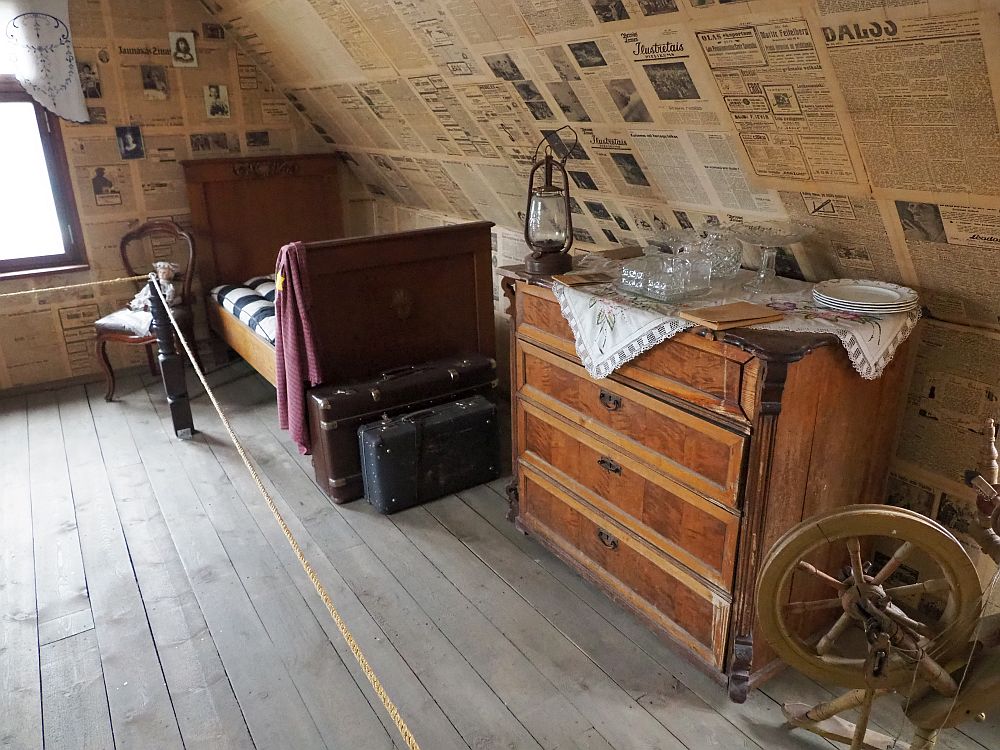
Originally standing at Maza Kalnu Iela 21a in the Riga Ghetto, about 30 people lived here. Today the ground floor holds models of the synagogues that once graced Latvia, while the upstairs has been set up to give an impression of what life in this house was like for the Jews of Riga Ghetto.
Riga Ghetto Museum: Maskavas iela 14a (Entrance from Krasta Iela). Open 10:00-18:00 daily except closed on Saturday and some Jewish holidays. Suggested donation €5 (about $5.50).
10. The KGB Museum
I wrote separate article about the KGB Museum. All I’ll say here is that it looks perfectly ordinary on the outside, yet was a place of true evil on the inside. The exhibition is free, but quite limited. To get a real sense of it, take the tour.
The KGB Museum: Brīvības iela 61 in Riga. Exhibition open daily 10:30-17:30. English-language tours daily at 11:00, 12:00, 13:00, 15:00 and 16:00 take about an hour. Exhibition: free. Tour: €10 ($11).
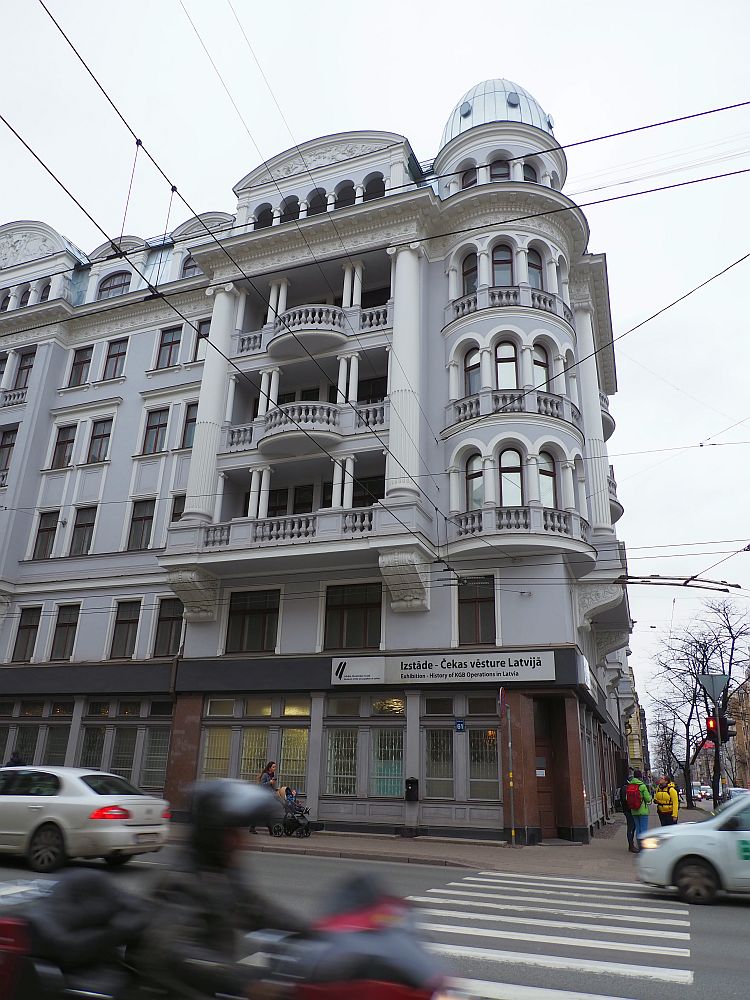
The KGB Museum is part of the Museum of the Occupation of Latvia, but I didn’t get to see the other part of it. Its permanent exhibition is in a temporary location, and covers the story of Latvia’s treatment under the German and Soviet occupations.
The Museum of the Occupation of Latvia: Raiņa bulvāris 7 in Riga. Open daily 11:00-18:00. Admission: voluntary donation. English-language guided tours daily at 14:00 and 16:00.
More things to see in Riga
Here are five more things to do in Riga that I didn’t end up having time for, but they all sound worthwhile to me.
1. The Ethnographic Open-Air Museum
I didn’t get to the Ethnographic Open-Air Museum, but I know that open-air museums are usually a great way to get an idea of the life of ordinary people in an earlier time. The museum is 14 kilometers from the city center, but you can drive or take a bus easily enough.
The Ethnographic Open-Air Museum: Brīvdabas iela 21, Rīga. Take a bus toward Ādaži, Garkalne, Carnikava, or Vangaži to Brīvdabas muzejs stop. Open daily 10:00-17:00 except in February and March, when it’s only open Wednesday-Sunday. Admission: October-April €2 ($2.20), May-September: €4 ($4.50).
2. 3. and 4. Art Museums in Riga
In a magnificent early 20th century building, the Latvian National Museum of Art focuses exclusively on Latvian artists. It also runs several other museums in other locations including the Museum of Decorative Arts and Design and the Art Museum Riga Bourse for foreign artists.
The Latvian National Museum of Art: Jaņa Rozentāla laukums 1. Open Tuesday-Thursday 10:00-18:00, Friday 10:00-20:00, and Saturday-Sunday 10:00-17:00. Closed Mondays. Admission: €3.50 ($4) for the exhibition hall, €3 ($3.30) for the permanent collection and €6 ($7) for a combined ticket.
Museum of Decorative Arts and Design: Skārņu iela 10. Open Tuesday and Thursday-Sunday 11:00-17:00 and Wednesday 11:00-19:00. Closed Mondays. Admission: €3.50 ($4) for the exhibition hall, €2.50 for the permanent collection, €1.50 ($1.70) for the exhibition on the 2nd and 3rd floor and €5 ($5.50) for a combined ticket.
Art Museum Riga Bourse: Doma laukums 6. Open Tuesday-Thursday 10:00-18:00, Friday 10:00-20:00, and Saturday-Sunday 10:00-18:00. Closed Mondays. Admission: €3.50 ($4) for the exhibition hall, €1.50 ($1.70) for Bose Hall, €3 ($3.30) for the permanent collection and €6 ($7) for a combined ticket.
5. The Powder Tower (The Latvian War Museum)
While I didn’t get to go inside of the Powder Tower, our tour guide Juris pointed it out and said that it is pretty much all that remains of the city walls that used to protect the city. The tower was used for defensive purposes and, judging by its name, I presume it housed an arsenal.
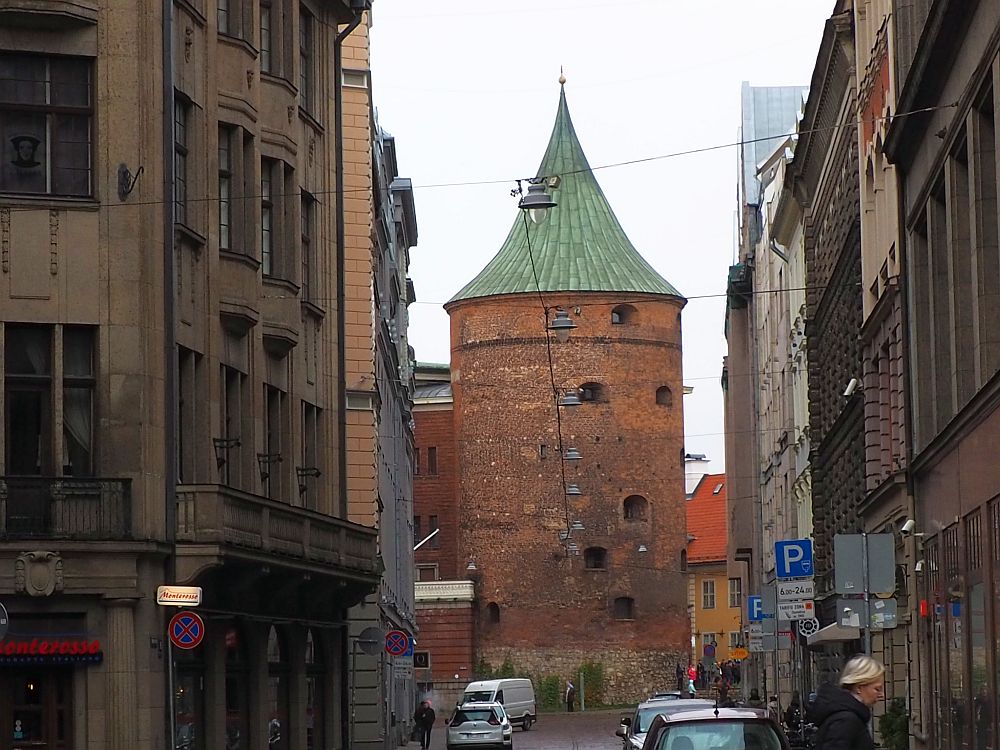
Nowadays it is home to the Latvian War Museum, which focuses primarily on Latvian military history through the 20th century.
The Latvian War Museum in the Powder Tower: Smilšu iela 20. Open daily: April-October 10:00-18:00 and November-March 10:00-17:00. Admission: free.
So there you have it: all the main sights to see in Riga. It would be near impossible to see it all in one day, but you could manage a lot of it in 2-3 days.
Remember, if planning a tour of Riga on your own seems like too much trouble, you can click here to book a private or group GetYourGuide tour!
Have you been to Riga? Is there anything I’ve left out that really ought to be listed?




